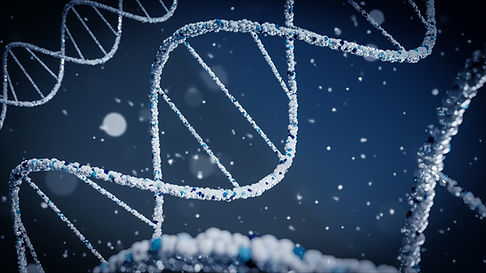DNA Analysis
Linking to distant cousins to extend your ancestry further back in time.

The Importance of Analysis
Most people commission a commercial DNA test via one of the main genealogy sites primarily in order to learn their geographic or ethnic genetic history. This can also provide insight into general areas that your ancestors lived and help direct research if records are sparse.
However, an often overlooked value of these tests is the capability to review the large number of DNA matches this generates. This may seem just seem like an enormous list of people - you may even know the top few closest matches, or at least recognise their surnames - but there is great value in the rest of these names to be used in confirming and extending your own pedigree.
Furthermore, DNA matches are invaluable in providing breakthroughs surrounding cases of illegitimacy and adoption, as well as highlighting historical illegitimacy which can enhance an ancestor's story.
Bringing It Forward
Your genealogical journey has likely taken you back a number of generations to a time and place where records are sparse leading to points where ancestors may be best guesses or unknowns.
By linking to relatives who have uploaded their DNA information to genealogy and DNA comparison sites online, you are able to solidly confirm ancestors where records may suggest more than one possibility thanks to common names or the habit of more than one cousin living in the same parish being named for their grandfather.
Once linked, it is possible to then analyse other individuals who share both your and that relative's DNA. These people then all form part of a cluster who have common descent from a single ancestral line. It becomes a lot easier then to find exactly how they are linked to you and, in turn, this can provide key knowledge to push your ancestry another generation further back.
This analysis is cyclical - once you have pushed back a further generation, links to more remotely related individuals can become apparent; their shared matches form a new, though often smaller, cluster to work with.
In my experience, analysing your DNA in this way is easily able to confirm your pedigree to ancestors from six generations previous. I have used it so far to confirm one of my own lines to eleven generations, though I would state the expectation would be to only match a few pairs of eighth generation ancestors with this method.
This then feeds back into family tree research via records and archive visits as new information is uncovered.


Illegitimacy and Adoption
My father was adopted. As his mother's name was not enough information to confirm his ancestry, it was via DNA clustering and construction of separate family tree lines that enabled me to find her descendants and contact them to confirm she was the correct individual.
However, this also resulted in the news that he was illegitimate, with zero written record or knowledge of who the father was. Further DNA analysis and construction of many family tree lines of the clusters that I postulated belonged to his paternal line resulted in the identification of five possible brothers, all deceased.
I was fortunate to be able to contact their descendants and offer to purchase DNA tests for them to confirm which brother was my biological grandfather.
I have had similar success with others using these methods, so if records cannot help you, I may well be able to.
DNA Testing
There are a few options available for commercial DNA testing. The pros and cons of each test have been weighed up on many blogs and reviews in the past, which you can find online.
Some tests have different functions which might suit specific situations, but for general family tree building, I would recommend the Ancestry test. The site has the largest comparison database and your test can be downloaded from Ancestry and uploaded to other sites like GEDMatch and MyHeritage to find additional matches.
The test itself simply involves a kit being sent to you, you supplying a hefty sample of saliva, and it being returned to the provider. Be aware that the turnaround time for sequencing and uploading can be as long as 8 weeks. Ancestry tests cost £79 plus postage, though occasionally there are sales that reduce that to £59.
If you are interested in doing such a test, but it seems a little overwhelming, I would be happy to guide you through the process step-by-step if you ask me for my DNA Analysis service.





